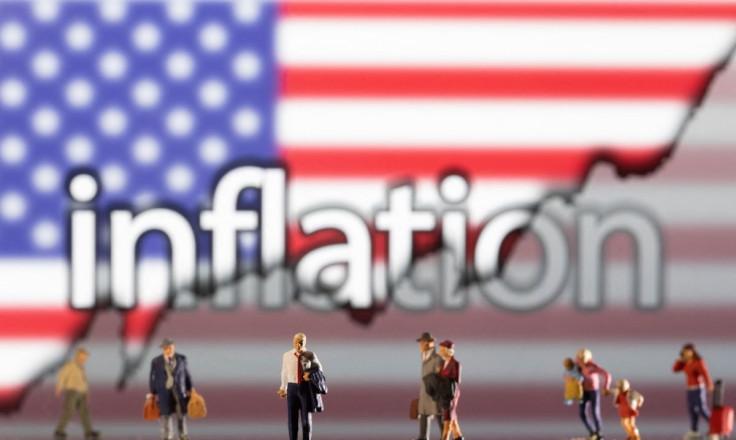U.S. Inflation Set To Heat Up Further As Impact Of Ukraine War Intensifies

Russia's invasion of Ukraine has dashed any hope U.S. consumers might have had for relief from sky-rocketing costs, with prices at the gas pump in the last week surging by the most in nearly 17 years and prices for other goods like food ready to march higher as well.
Even before the invasion, the latest U.S. monthly inflation report, due on Thursday, was set to show prices rising at their fastest in 40 years. The data, which is for February, will likely show only a preliminary impact from the surge in U.S. oil prices, which hit $130 a barrel on Monday, but the spike is seen driving overall inflation higher in the months to come.
"There had been expectations that February would be the high point for year-over-year headline inflation, but the Ukraine shock is already sending gas prices higher in March," said Tim Duy, an economist at SGH Macro Advisors.
The development also comes at a perilous time for the Biden administration, already under fire for soaring costs for rents, electricity and food as the economy grapples with the impact of the COVID-19 pandemic, in which demand has outstripped supply.
U.S. Federal Reserve policymakers will also be keenly watching the reading, which will come just under a week before they are set to raise interest rates by a quarter percentage point as they begin a tightening cycle meant to bring down inflation without derailing the economic expansion.
Fed Chair Jerome Powell said last week that the central bank will act cautiously given the uncertainty of the impact of the war in Ukraine, but persistently high inflation will weigh as policymakers sketch out their forecasts at their policy meeting on March 15-16 for the pace of hikes in the months ahead.
Economists polled by Reuters forecast the Consumer Price Index to have climbed 7.9% on a year-on-year basis in February, up from 7.5% in January. The monthly rate is forecast to have risen 0.8% after increasing 0.6% the prior month.
Gas prices increased nearly 6% in February, which would add around 0.2 percentage point to the headline number last month but the bigger effects are still to come.
The average U.S. price for regular unleaded gasoline on Monday was $4.065 a gallon, according to AAA, only about 5 cents shy of the record high. The increase over the last week of about 45 cents a gallon was the largest since 2005, it said.
Russia is the world's biggest exporter of oil and gas and a mooted ban on oil imports from Russia pushed Brent to above $139 a barrel on Monday.
By Oxford Economics' estimates, the surge in oil prices would add around 0.6 percentage point to March's inflation reading but that could be easily outstripped in the coming months.
Investment banks say crude prices could approach $200 a barrel this year if Russian supply evaporates, with dire consequences for the global economy.
FOOD COSTS ALSO SET TO RISE FURTHER
This week's inflation reading could show a temporary softening in food inflation in February compared to January, but any let-up is set to be shortlived.
A pickup in demand for hospitality services as the economy readjusts post the Omicron disruption could drive services prices higher, including for restaurants and other food-away-from-home categories, economists at Barclays note, while the worsening war in Ukraine will now also disrupt supply chains.
Russia and Ukraine export more than a quarter of the world's wheat and Ukraine is a major corn exporter. Supply chain disruptions could add between 0.2 to 0.4 percentage point to headline inflation in developed economies in the next few months, according to Capital Economics, with higher costs for food-at-home categories persisting through the year.
© Copyright Thomson Reuters 2024. All rights reserved.





















